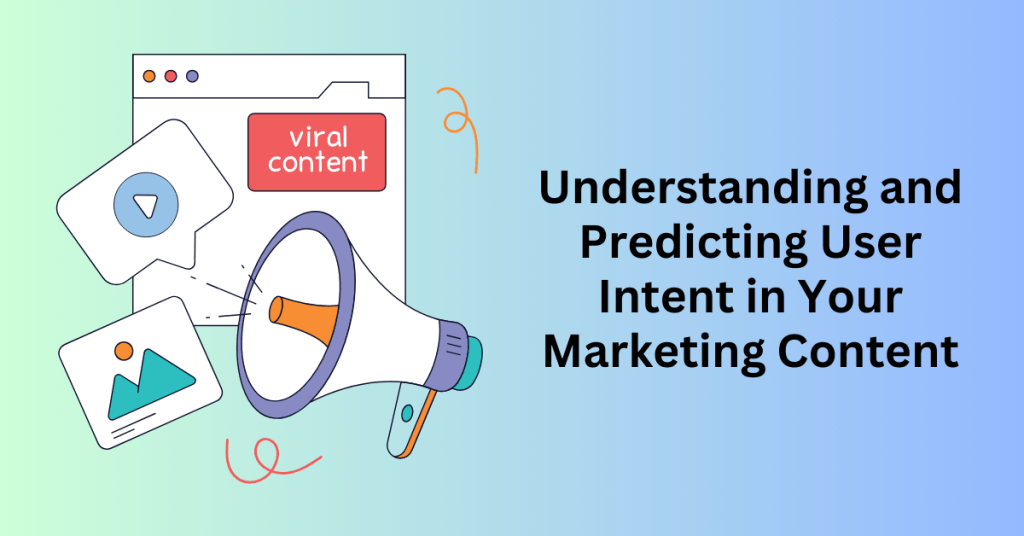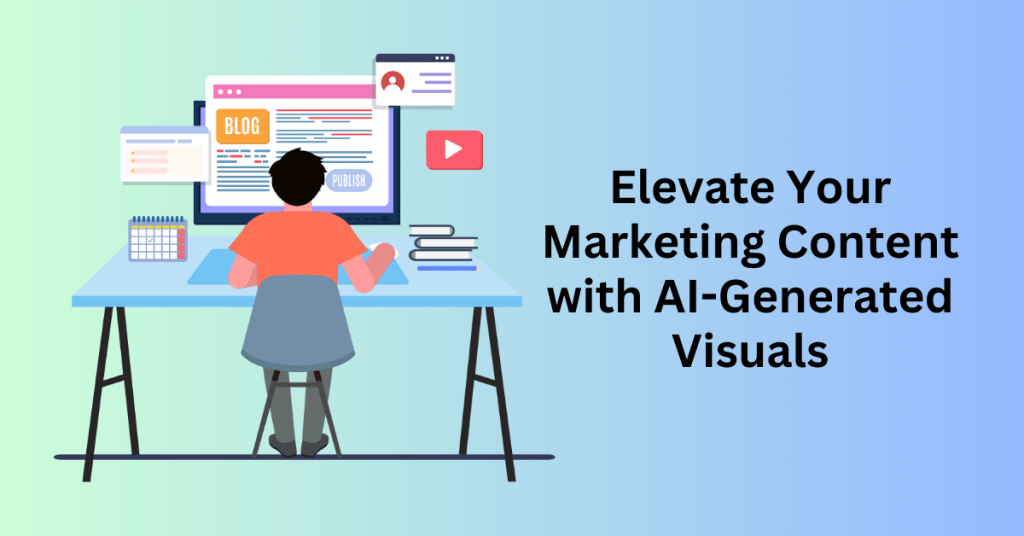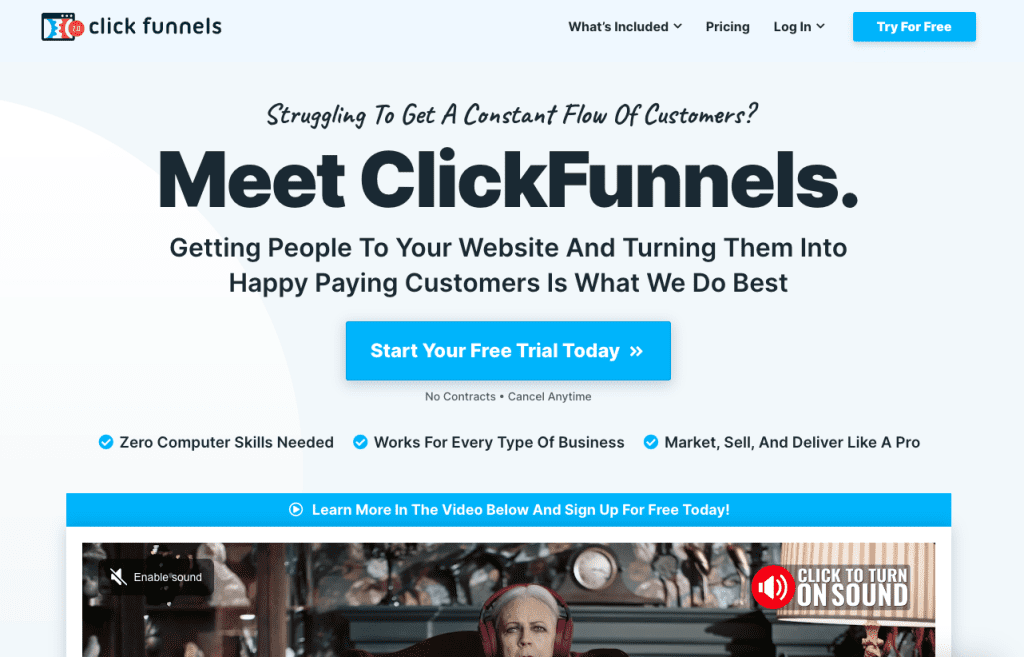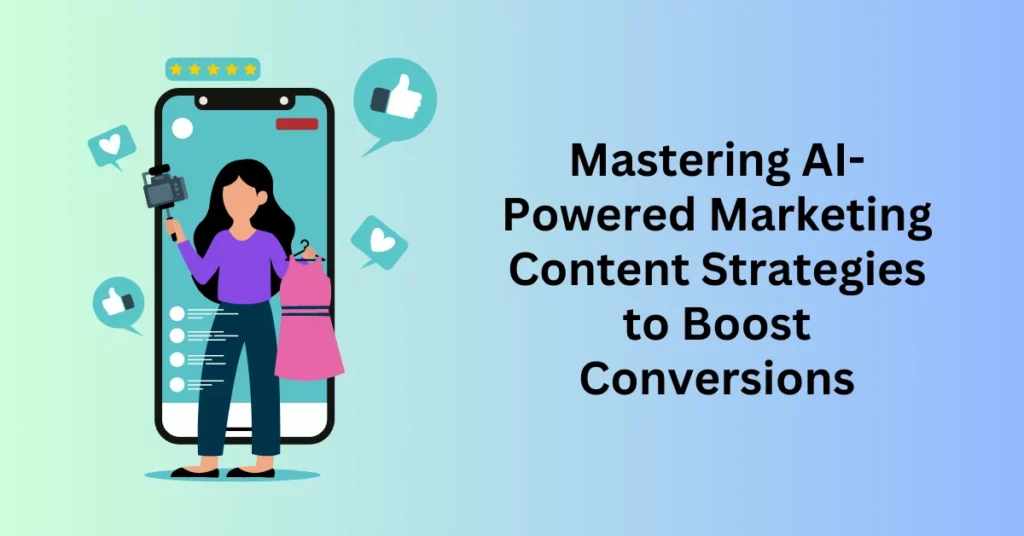Artificial intelligence has revolutionized the way we approach marketing content creation, making it faster and more accessible than ever before. Yet, despite the enormous potential AI offers, many marketers are falling short of achieving the results they want. Why? Because they’re not using AI to its fullest potential.
Instead of generating compelling, high-converting marketing content, many end up with bland, generic materials that fail to grab attention or inspire action. The truth is, creating great marketing content isn’t just about using AI—it’s about knowing how to use AI effectively to craft messages that resonate with your audience and drive real results.
The good news is that when you understand what truly impactful marketing content looks like, and how to guide AI to produce it, you can transform your marketing efforts. With the right approach, you can stop wasting time on uninspired content and start producing materials that generate clicks, leads, and conversions with ease.
In this guide, we’ll break down practical, actionable strategies to help you unlock the full power of AI for your marketing. Whether you’re a seasoned marketer or just starting out, you’ll gain the insights and techniques needed to elevate your content from ordinary to extraordinary.
Let’s dive in and explore how you can leverage AI to transform your marketing strategy into a powerful engine for growth!
Understanding and Predicting User Intent in Your Marketing Content

User intent refers to the underlying reason behind a person’s online search or activity. Understanding this motivation helps you create content that aligns with what users are truly seeking—whether it’s information, products, or solutions.
For example, a search for “how to brew coffee” might appear to be about buying equipment. However, the real intent could be to learn the best brewing techniques for home use. Recognizing these nuances allows you to create content that meets their needs directly. This not only boosts engagement but also reduces bounce rates.
Optimizing Marketing Content for Search Engines and User Satisfaction
Google’s algorithms are built to recognize content that matches user intent. Using the right keywords and phrases that address specific search queries can improve your chances of ranking higher. This helps you reach the right audience more effectively.
Aligning your content with user intent ensures it meets the searcher’s needs. It also signals to Google that your content is relevant and valuable. When your content aligns with user intent, it is more likely to appear in search results. This leads to greater visibility and higher traffic.
Using AI to Fine-Tune Marketing Content and Target Audience Needs
AI tools can help analyze your content and match it with the intent behind a user’s search. To maximize their potential, provide these tools with detailed information about your target audience. This includes demographics and relevant context about your niche or industry.
Refine the AI-generated output and adjust it based on your audience’s needs. This allows you to create content that performs well in search rankings while engaging users. By addressing their specific desires, your content becomes both SEO-friendly and aligned with what your audience is truly looking for.
The Importance of Contextual Product Integration in Marketing Content
One common challenge marketers face is creating content without a clear conversion point. The content may be engaging and well-received, but it fails to drive the desired action—such as a purchase, sign-up, or other conversions. The problem lies in content that exists simply to be read, without a purposeful strategy to guide the audience toward solving their problem.
Effective content should go beyond just informing the reader. It needs to captivate them, show how your product or service addresses their problem, and lead them toward taking action. Unfortunately, many AI tools fall short in this area. Unless specifically directed, AI often overlooks the importance of naturally incorporating product recommendations. When it does include them, these mentions can feel forced and disrupt the flow of the content.
Creating a Seamless Integration of Products
A well-crafted piece of content should do more than engage your audience—it should seamlessly introduce relevant products or services. This process, known as “contextual product placement,” involves integrating product mentions in a way that feels natural and adds value to the topic. The goal is to make the recommendation feel like a natural part of the content, not an awkward interruption.
For instance, imagine you’re reading an article about brewing coffee with the pour-over method. While learning about the best brewing techniques, the article might mention a product that simplifies the process or improves results. This recommendation doesn’t feel forced. Instead, it adds value to the reader’s experience and supports their journey toward making better coffee.
Turning Content Into a Conversion Tool
Many pieces of content fail to convert readers into customers because they lack a clear call to action or product recommendations aligned with the reader’s intent. While these articles may provide useful information, they often miss the next crucial step: guiding the reader toward purchasing a product that enhances their experience. Without this element, even highly engaging content may struggle to generate revenue.
This is where AI can make a significant impact. With the right prompts, you can transform purely informational content into content designed to drive conversions. For example, by instructing AI to include contextually relevant product mentions that fit naturally within the text, you can create content that not only engages readers but also encourages them to take action—whether it’s making a purchase or signing up for a service.
Optimizing Existing Marketing Content for Conversions
If you have content already published on your blog, website, or funnel, you can easily revisit it and use AI to add contextual product recommendations. This small adjustment can significantly enhance the user experience while driving conversions. It transforms passive content into a revenue-generating asset. Instead of simply hoping your content ranks well on Google, you ensure it serves two purposes: engaging and educating your audience while guiding them toward a meaningful conversion.
By leveraging AI to strategically place product mentions, you boost your content’s revenue potential while keeping it aligned with your audience’s needs and interests. This approach maximizes the return on your content creation efforts and provides a seamless, valuable experience for your readers.
Elevate Your Marketing Content with AI-Generated Visuals

One of the most effective ways to transform your content from “good” to “great” is by incorporating visually appealing images that capture attention and enhance your message. In the past, creating custom visuals often required hiring a graphic designer or having design skills yourself. However, with advancements in AI technology, you can now generate stunning, high-quality visuals in just a few minutes without needing design expertise. By simply inputting a few well-crafted prompts, you can create images that perfectly complement your content, making it stand out from the competition.
Whether you’re looking to create graphics for blog posts, social media, or product mockups, AI can handle it all. With the right prompts, AI tools can generate visuals that resonate with your target audience and elevate the overall look of your content.
Crafting Effective Prompts for AI-Generated Images
To get the best results from AI-generated images, the key is in the prompts you provide. A well-defined prompt can guide the AI to create a visual that aligns perfectly with your content and brand. Here are some example templates to help you get started:
- Blog Post Graphics: “Generate an image in the style of [Image Style], featuring a [Central Image] surrounded by [Supporting Visuals] that represent key aspects of [Topic]. Use a [Color Scheme] colour palette and [Typography Style] to create a cohesive and compelling visual that reflects the value of my content.”
- Product Mockups: “Generate a realistic product mockup for [specify product], showcasing its [key features] in a [setting or environment]. Highlight the [unique selling points] and [benefits] to allow customers to envision the product before making a purchase.”
For example, if you’re creating images for a blog post about email marketing, you might use a prompt like this:
“Generate an image in the style of a flat vector illustration, showcasing a person opening an email with a magnifying glass, an email list, an engaging subject line, a personalized message, and an analytics chart in a grid layout format. Incorporate a blue and green colour palette and use icons and bold typography.”
Examples of Different Niches and Industries
AI-generated visuals can also be tailored to specific niches or industries, allowing you to create images that resonate with your audience. Here are a few examples:
- Yoga Niche: “Generate a serene image of a person practising [yoga pose] on a [beach/mountain/garden] at [sunrise/sunset]. Incorporate elements of nature, such as [trees/ocean/flowers], and use a soft, warm colour palette to evoke a sense of tranquillity and mindfulness.”
- Hospitality Industry: “Generate an inviting image of a [luxury hotel room/cosy bed and breakfast/modern hostel], showcasing the [unique amenities/design features/location]. Highlight the [comfortable bed, scenic views, stylish decor], and use a [warm/cool/vibrant] colour palette to create an appealing and welcoming atmosphere.”
- SaaS Tools: “Generate an image illustrating the [key benefits/features] of your SaaS tool, such as [automation, collaboration, analytics]. Use a clean, modern design style with bold colours and simple icons to communicate the efficiency and value of your software.”
- Food & Beverage: “Create an image featuring a [delicious meal/cocktail/local speciality] from the [restaurant/bar/nearby dining options]. Use appetizing colours and realistic textures to showcase the quality and appeal of the cuisine, enticing potential customers to engage.”
Refining AI-Generated Visuals for Perfect Results
Once you’ve received your AI-generated image, you may need to tweak it to ensure it fits your content perfectly. If the first image doesn’t meet your expectations, you can ask the AI to adjust specific details. This includes changes to colours, composition, or individual elements within the image. By making small adjustments, you can fine-tune the visuals until they meet your needs.
With AI, you no longer need graphic design skills or an expensive designer to create high-quality visuals. Using simple and clear prompts, you can generate compelling, eye-catching images. These visuals can enhance your blog, social media, product marketing, or any other platform. You can refine and customize the images further to match your specific needs. This gives you complete creative control without the stress or cost of traditional design methods.
By integrating AI-generated visuals into your content, you’ll capture attention and boost engagement. This approach helps leave a lasting impression on your audience, making your content truly stand out.
Email Nurturing Content: Engaging and Converting Your Audience
Did you know that every email you send to your audience is a form of content? Whether you realize it or not, each email contributes to building a relationship with your subscribers. However, here’s the reality: one-off emails won’t get the job done.
To truly engage with your audience, you need to build an ongoing connection. One of the most effective ways to do that is through an email nurturing sequence.
A nurturing sequence is a series of emails that automatically trigger when someone subscribes to your list or makes a purchase. With the right sequence, you can keep your audience engaged and guide them through your customer journey. You can even drive sales—all without being a professional copywriter.
The best part is, you don’t need to hire a copywriter. AI can help you craft an effective nurturing sequence in just minutes.
How AI Can Help You Create a Nurturing Email Sequence
Creating an email nurturing sequence that works requires understanding your business, your target audience, and their needs. With AI, you can start building this sequence quickly. The key is to share the details of your business with the AI, such as what you do, who your target audience is, and what problems they want to solve.
To begin, you’ll want to outline the following:
- Your Business: What products or services do you offer, and how do they help your audience?
- Your Target Audience: Who are your subscribers or customers? What are their pain points and goals?
- Your Objectives: What are your goals for this nurturing sequence? Are you aiming to build a relationship, promote products, or something else?
- Email Topics: Ask AI to generate relevant email topics that match your goals and your audience’s needs.
Once you have these points in mind, you can prompt AI to generate outlines for each email. These outlines should include the core message you want to convey and any promotional offers or calls to action you’d like to include. You can then either write the emails yourself or let AI flesh out the details for you.
Automating Your Nurture Sequence
Once you have the sequence outlined, you can easily plug it into an automated email platform like ClickFunnels. Here’s how you can streamline the process:
- Target Audience and Signup Method: Write down how people will join your email list (e.g., via a trial sign-up, content download, or ad click).
- Goals for the Sequence: Identify what you want to achieve with your emails, such as increasing product sales, building brand awareness, or fostering a relationship with your audience.
- Number of Emails: Determine how many emails you want in your sequence, depending on your goals and how much information you need to share.
Once you have this information, feed it into the AI inside ClickFunnels to generate your email sequence. You’ll also have access to a library of professionally designed email templates that you can easily customize to fit your brand. With ClickFunnels’ drag-and-drop editor, editing your emails is quick and straightforward. The AI can even help you generate catchy subject lines with just a click, and you can run A/B tests to optimize your email’s performance.
AI-Powered Email Content That Converts
AI can help you craft email content that feels professional and polished, even if you don’t have copywriting experience. You can prompt the AI to write emails in various tones—whether casual, professional, or even persuasive—depending on your brand voice. Here’s an example of what it might look like when you ask AI to write an email in a professional tone:
Subject: How [Your Product] Can Help You Achieve [Target Goal]
Body: Hi [Name],
Are you struggling with [problem]? You’re not alone. Many of our customers faced the same challenge before discovering [Your Product]. Our solution offers [key benefits], and we believe it can make a real difference for you too. Let us show you how!
This approach allows you to generate content that resonates with your audience, driving engagement and conversions without the wait for a professional copywriter.
With AI on your side, crafting a nurturing email sequence is faster, easier, and more effective than ever. You can bypass the need for extensive copywriting expertise and start building your email content with minimal effort. The result? A highly effective sequence that not only engages your audience but also drives revenue and helps move your subscribers through the customer journey.
Take advantage of a full-featured 14-day trial of ClickFunnels to get started on your email nurturing strategy. With AI-generated emails, automated sequences, and optimized content, you can create an engaging, revenue-driving email marketing system that works for you—on autopilot.

Leverage Customer Insights to Create Engaging Marketing Content
When it comes to crafting exceptional content, understanding your audience’s needs is crucial. The first step is identifying what your audience wants, and the second step is delivering that content in a way that resonates and engages. The best content speaks directly to your audience, addressing their pain points, needs, and desires from their perspective.
But how do you uncover these insights? By listening to what your potential and current customers are saying. You can find valuable information in places where people naturally express their opinions, such as Reddit, YouTube comment sections, Facebook groups, forums, and even Amazon reviews.
Tap into Customer Feedback for Valuable Insights
To illustrate how this works, let’s consider a hypothetical example where you run a summer camp or a blog aimed at teenagers, and you want to write content about activities they can do during their free time or holidays, with a focus on personal development. Where can you find out what interests or challenges they face?
Platforms like Reddit are a goldmine for understanding your audience’s thoughts. Take a look at posts and discussions relevant to your niche—like those on teen activities—and analyze the comments for insights into what resonates with your audience.
However, manually sifting through hundreds of comments can be a time-consuming process. Instead of spending hours combing through data, you can use AI tools to do the heavy lifting. AI can analyze these comments and extract key pain points, questions, and ideas that your audience is actively talking about.
For instance, after gathering insights from a Reddit thread about teens looking for personal development activities during their free time, AI can help you identify recurring themes. You’ll discover what content topics are in demand and what problems need solving.
Transform Insights into Actionable Content
Once AI helps you extract insights from customer feedback, you can easily turn those ideas into actionable content. This content can take many forms, such as blog posts, email newsletters, social media ads, or even video scripts. The best part? Since the ideas come directly from your target audience, the content will be naturally engaging and relevant to them.
You can take these insights, run them through an AI tool, and refine them into high-quality, tailored content. The result will be content that directly addresses your audience’s needs and interests. Whether you’re writing blog posts or creating email sequences, this content will feel personal and on-target, leading to better engagement.
Automate Content Creation and Distribution
Once you have these insights and have created the content, the next step is distribution. Tools like ClickFunnels make it easy to integrate your content into blogs, email funnels, or landing pages. By automating this process, you ensure your content reaches the right audience at the right time without requiring manual effort.
With AI-powered customer insights and automated content creation, your content strategy can quickly move from “good” to “great.” This approach drives higher engagement and conversions. By listening to what your audience is already saying, you can craft content that speaks directly to them, building stronger connections and growing your business.
Final Thoughts: Mastering AI-Powered Marketing Content: Proven Strategies to Boost Conversions
Incorporating AI into your marketing strategy can revolutionize the way you create content. However, it’s important to approach it with a clear understanding of both the technology and your audience. AI can automate time-consuming tasks, personalize messaging, and predict trends. This allows you to focus on delivering value that resonates with your customers.
Successful AI-driven content requires a balance between data-driven insights and human creativity. It’s not about replacing the personal touch that builds trust with your audience. Instead, it’s about enhancing your ability to connect with them in meaningful ways.
As you experiment with AI tools, keep refining your approach. Analyze results and adapt your strategies accordingly. AI marketing is not a one-size-fits-all solution. It’s a continuous process of learning and optimization. Stay proactive and experiment with new AI advancements. At the same time, maintain a strong focus on your brand’s core values. By doing so, you can stay ahead of the curve and create marketing content that grabs attention and drives conversions.
The future of marketing is smart. With the right strategies in place, AI can become a powerful partner in your success.


